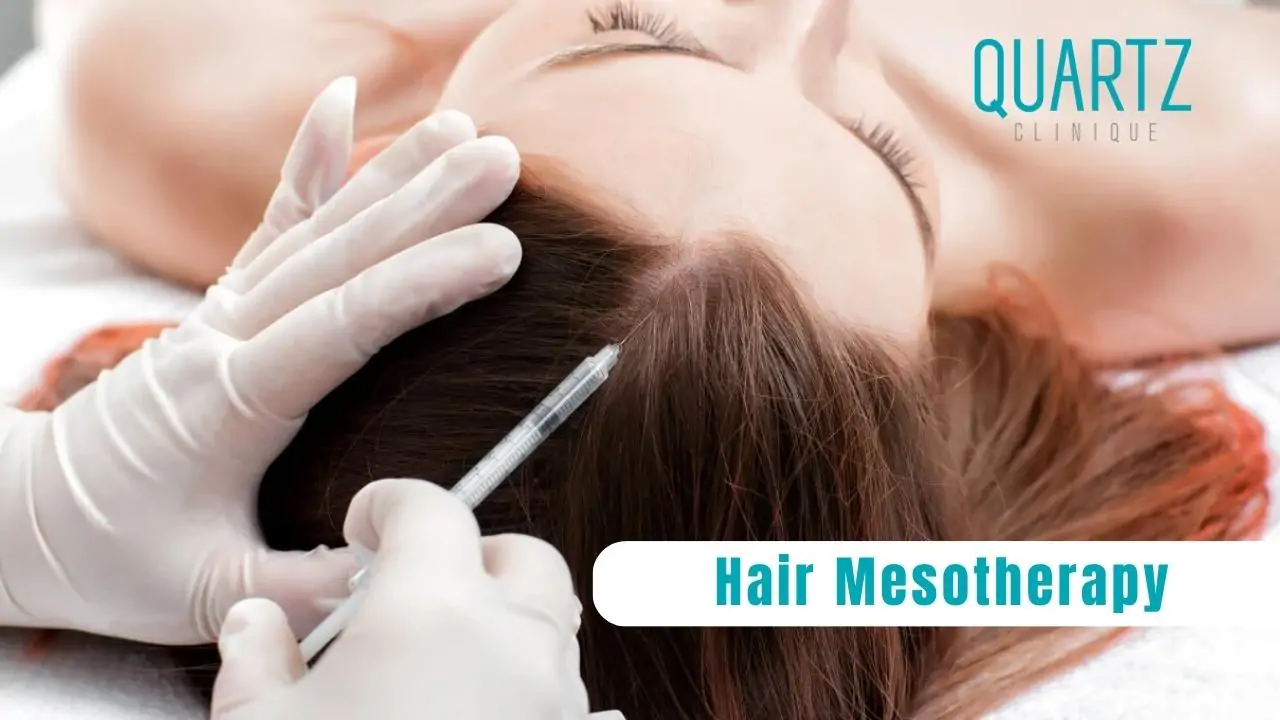
Hair Mesotherapy
Hair health is an important part of overall appearance and self-confidence. However, genetic predisposition, hormonal changes, environmental conditions, nutritional deficiencies, and the frequent use of styling products can compromise hair vitality. One of the most common consequences of these factors is hair loss, which affects both men and women at different stages of life.
Hair Mesotherapy is an advanced, non-surgical treatment that directly targets the hair follicles and scalp. With a specially prepared mixture of vitamins, minerals, amino acids, and growth stimulants, this method nourishes the scalp, strengthens hair follicles, and stimulates natural hair growth. At our luxury clinic in Istanbul, Turkey, hair mesotherapy is performed under the supervision of experienced specialists, providing international patients with safe, effective, and long-lasting results.
What is Hair Mesotherapy?
Hair Mesotherapy is a minimally invasive treatment that involves injecting a customized blend of vitamins and minerals into the scalp. These include Calcium, Zinc, Selenium, Iron, Copper, Potassium, Manganese, Iodine, and Minoxidil. The procedure stimulates blood circulation, improves nutrient supply to the follicles, and helps restore healthier, stronger, and more voluminous hair.
This method is recommended for:
- Individuals experiencing genetic or hormonal hair loss,
- Men with early-onset baldness,
- Women facing hair thinning due to styling or heat exposure,
- Patients with weakened, brittle, or lifeless hair.
How is Hair Mesotherapy Performed?
The procedure is performed step by step under the control of a specialist:
- Examination & Assessment: The degree of hair loss is evaluated through physical examination and, if necessary, medical tests.
- Preparation: The scalp must be clean before application. The injection area is disinfected if required.
- Injection: Using fine-tipped needles, the nutrient-rich mesotherapy cocktail is injected into the scalp.
- Duration: The application takes 20–40 minutes, depending on the extent of hair loss and hair density.
Post-Procedure: Patients can return to daily life immediately, but specific aftercare rules must be followed for the best outcome.
Recovery Process After Hair Mesotherapy
- Patients can resume daily activities the same day.
- Hair washing should be avoided for 24 hours.
- Direct sunlight should be avoided for 2–3 days; protective headwear is recommended.
- Scalp massage or scratching should be avoided.
- Swimming, sauna, and steam rooms should be avoided for 5–7 days.
- Alcohol consumption should be minimized during the healing period.
By following these precautions, patients ensure optimal results and a smooth recovery process.
Benefits of Hair Mesotherapy
Hair mesotherapy provides both medical and aesthetic benefits:
- Strengthens hair follicles and reduces hair loss,
- Improves scalp health and blood circulation,
- Stimulates new hair growth,
- Thickens fine hair strands and increases volume,
- Enhances shine and vitality of hair,
- Prevents hair breakage and thinning,
- Supports long-term scalp nourishment.
Comparison of Hair Mesotherapy and Other Hair Treatments
| Treatment | Method | Best For | Results |
|---|---|---|---|
| Hair Mesotherapy | Injection of vitamins & minerals into scalp | Early-stage hair loss, weak hair strands | Strengthens follicles, boosts growth, long-lasting with sessions |
| PRP (Platelet-Rich Plasma) | Injection of patient’s own plasma | Post-transplant support, general hair strengthening | Accelerates healing, stimulates regrowth |
| Hair Transplant (FUE/DHI) | Surgical relocation of hair follicles | Advanced baldness, irreversible hair loss | Permanent, natural hair restoration |
Frequently Asked Questions (FAQ)
Is there an age limit for hair mesotherapy?
Yes. The procedure is generally recommended for individuals over 18. In rare cases of severe hair loss in younger patients, treatment is possible only under strict medical supervision.
Can both men and women have hair mesotherapy?
Yes. The procedure is effective and safe for both genders.
Who is not suitable for the procedure?
It is not recommended for pregnant or breastfeeding women, patients with scalp infections or allergies, individuals undergoing cancer treatment, and those with severe endocrine disorders.
What are the possible side effects?
Temporary redness, mild swelling, and itching at the injection site may occur. These effects usually disappear within a few days.
Is the procedure painful?
Mild pain or discomfort may be felt due to injections, but it is not severe.
How many sessions are needed?
On average, 8–10 sessions with 15-day intervals are required for long-lasting results.
Are the results permanent?
Mesotherapy results last 3–4 years. To maintain the effect, repeat sessions may be necessary.
Hair Mesotherapy in Our Istanbul Clinic
Our clinic in Istanbul offers luxury healthcare standards combined with 25+ years of medical expertise. We welcome international patients with:
- Treatments supervised by expert doctors,
- 4–5 star hotel accommodation,
- VIP transfer services,
- Interpreter support,
- Continuous aftercare and consultation.
By choosing Hair Mesotherapy in Turkey – Istanbul, you benefit from both medical excellence and cost advantage compared to Europe or the US, without compromising safety or comfort.




